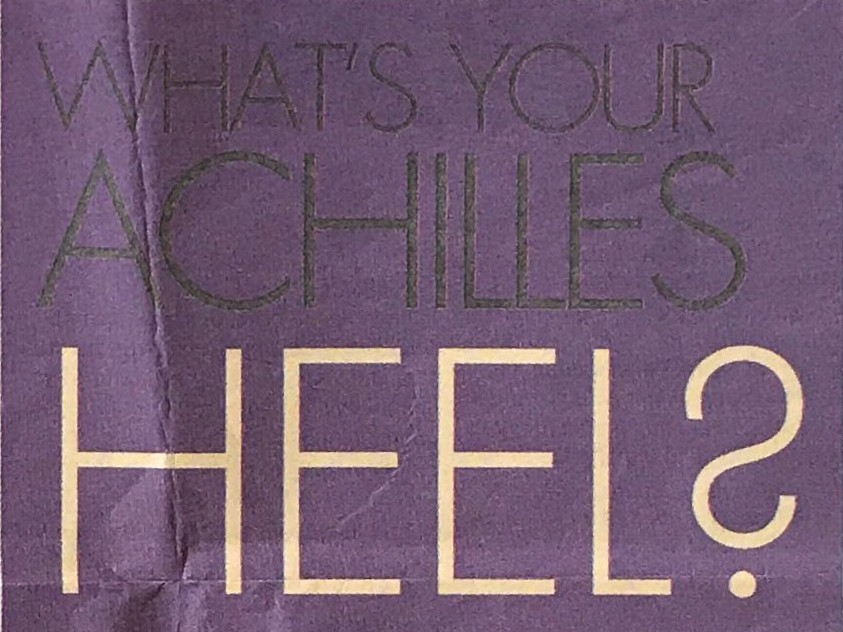When it comes to working out, proper footwear is sport on
Would you drive a Lamborghini if you were going on an off-road trip? No, you would opt for a rugged SUV that can weather bumpy terrain.
Similarly, you shouldn’t wear a pair of running shoes to play tennis.
The running shoes may fit you perfectly and offer good cushioning but they just aren’t designed to perform well on a tennis court.
There is a huge range of sports shoes available today: running, aerobics, cross trainers, walking, tennis, squash, golf, yoga, soccer, basketball, adventure and others.
If you do a variety of sports, does this mean you have to buy a different pair for all your activities?
Experts say it depends on the following factors: frequency of activity, level of activity and your medical condition.
If you exercise only occasionally- that is, run less than Um a month, go to the gym once or twice a month or do aerobics once or twice a month – and have no medical problems in your feet, knees or back, you can safely use one good pair of running shoes for running, gym work and aerobics.
But if you exercise more frequently and/or have pain in the feet, knees or back, you should invest In different pairs of shoes for your fitness pursuits.
Some exercises, like high-impact running and cardio workouts, require shoes that can give your feet maximum support and cushioning.
Other types of sports where you have to move in different directions all the time, such as tennis, require shoes that allow you multi-directional movement without placing under stress on the ankles and knees.
While buying shoes for every activity can be expensive – sports shoes rarely cost under $100 – the medical costs of an injury could be more prohibitive.
Worse, the injury could even end your sporting and fitness routine.
Podiatrist Tye Lee Tze says the foot plays a critical role as it act as the foundation for the rest of the body. An unstable foundation affects structures above it like the knees, hips and back.
Using the wrong pair of shoes can increase the risk of injuries as your muscles and joints may have to work harder to compensate for the shoes’ lack of proper support.
If the shoes are not providing you with stable support, this can cause an ankle sprain. Also common are shin splints, where the front of the lower legs becomes painful, Achilles tendinitis, where the large tendon at the back of your ankle gets swollen and painful, and plantar fasciitis, where the sole of the foot becomes painful.
The shoes you choose must work with your feet and legs, not against them.
And if you have feet problems, such as being flat-footed, it is even more crucial that you get good support from your footwear.
In such instances, you should get a podiatrist to study your feet. He can then recommend the type of shoe – with proper cushioning, motion control and stability – that you should be using.
He may also prescribe orthotics, or custom-made insoles, which compensates for the way your feet make contact with the ground.
The bottomline: Don’t be penny wise, pound foolish. If you stinge on your footwear, it may cost you more in the long run, in more ways than one.
Information from podiatrist Tye Lee Tze, tel: 6838-0757
1. Basketball shoes
- Built for forward and backward acceleration, jumping, sudden stops and quick side-to-side movements.
- Well-cushioned with added stability due to a high cut that supports the ankle.
- Not suitable for running, aerobics or court games like tennis.
2. Tennis shoes
- Designed for multi-directional movement.
- Bulkier at the sides, especially in the forefoot area, to provide greater side-to-side control.
- These shoes have non-marking durable outsoles whose grip is not suitable for concrete, asphalt or hard-running surfaces. Don’t use them for running.
3. Golf shoes
- Stable, yet allows some side-to-side motion as not to hinder natural foot movement during golf swings.
- Some are fitted with spikes to provide a firm grip on grass. Others have rubber soles designed for extra grip.
4. Yoga shoes
- Very-little cushioning as there is hardly any high-impact motions in the workout.
- Light and flexible, but provides good grip for poses that require balance.
- Should not be used for anything that involves jumping or running.
5. Running shoes
- Designed for movement in one direction — specifically, forward motion.
- Generally well-cushioned in the heel and forefoot though they offer minimal side-to-side control.
- Slim and lightweight.
- Not good for sports which require sudden changes of direction like tennis and basketball.
By Pradeep Paul. Originally posted in The Straits Times, January 20 2005

